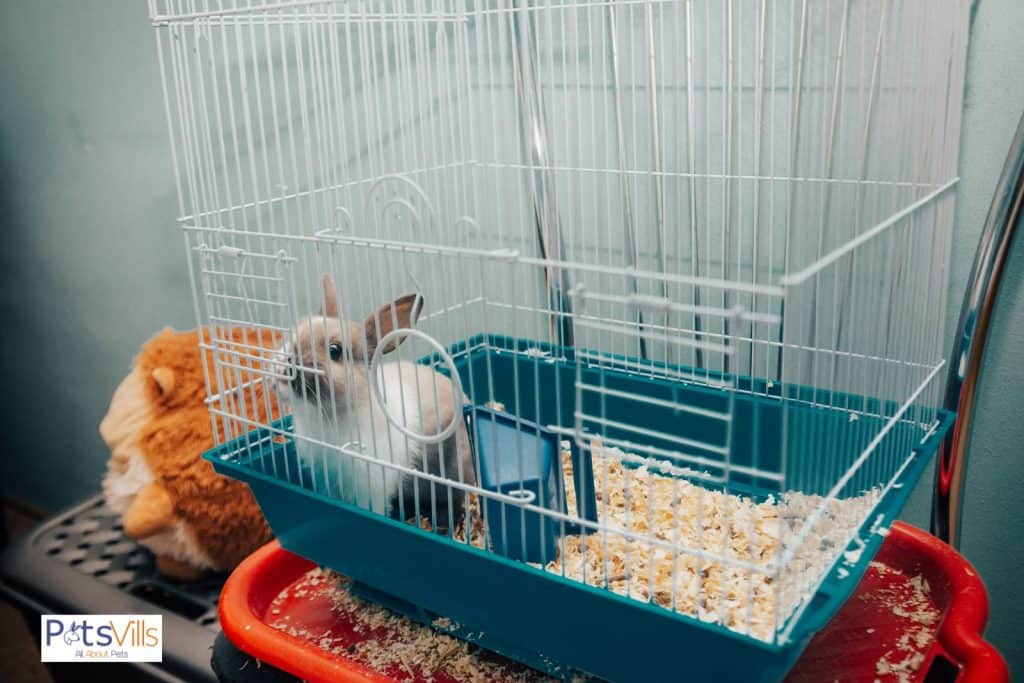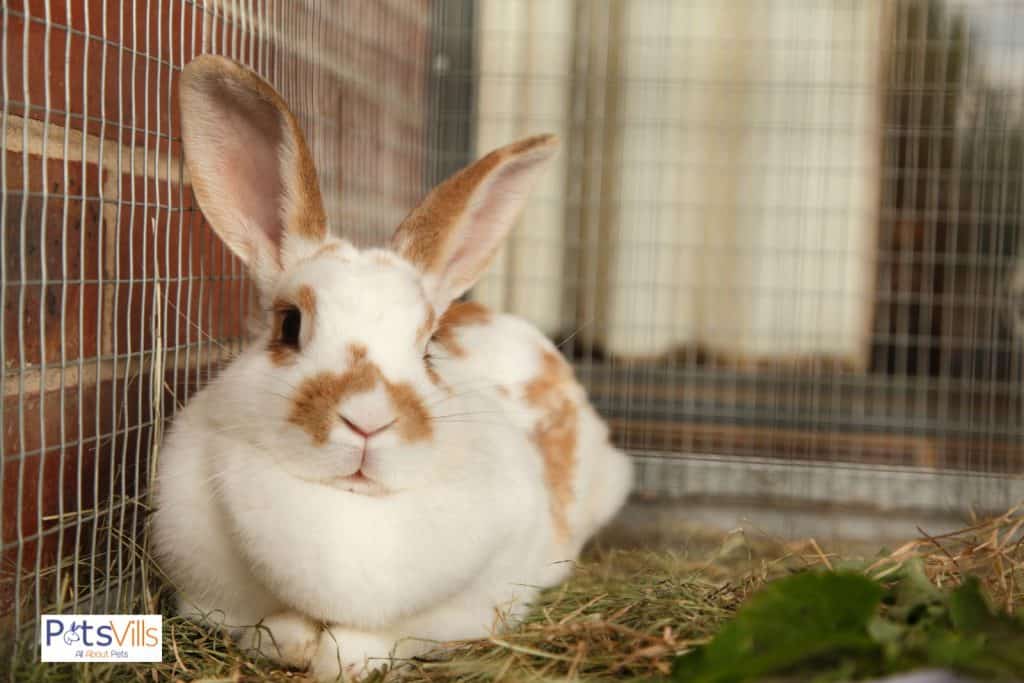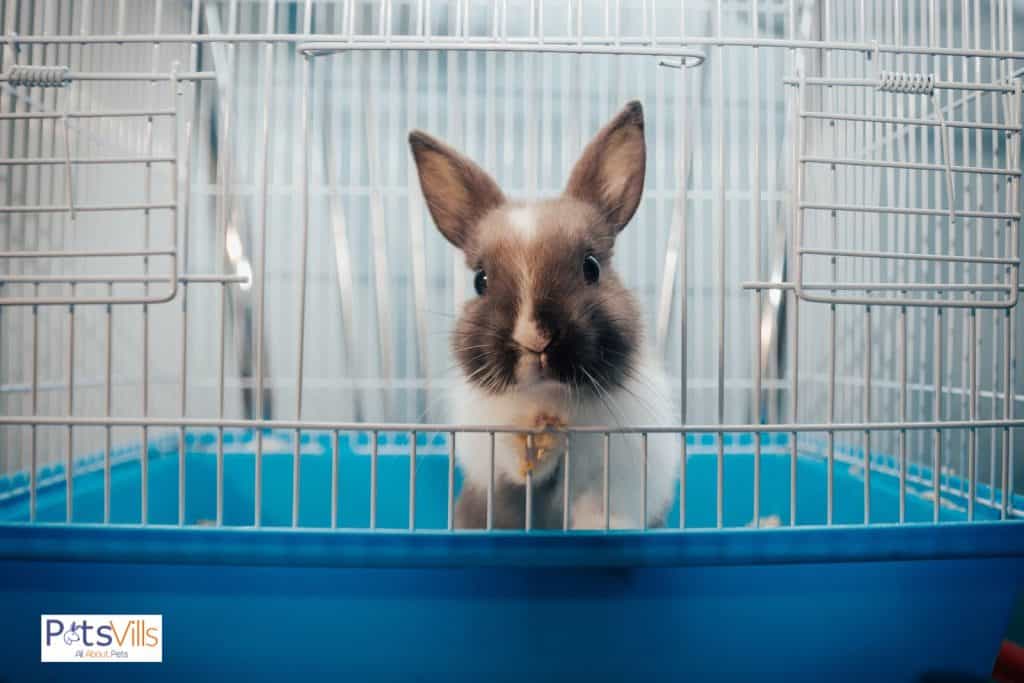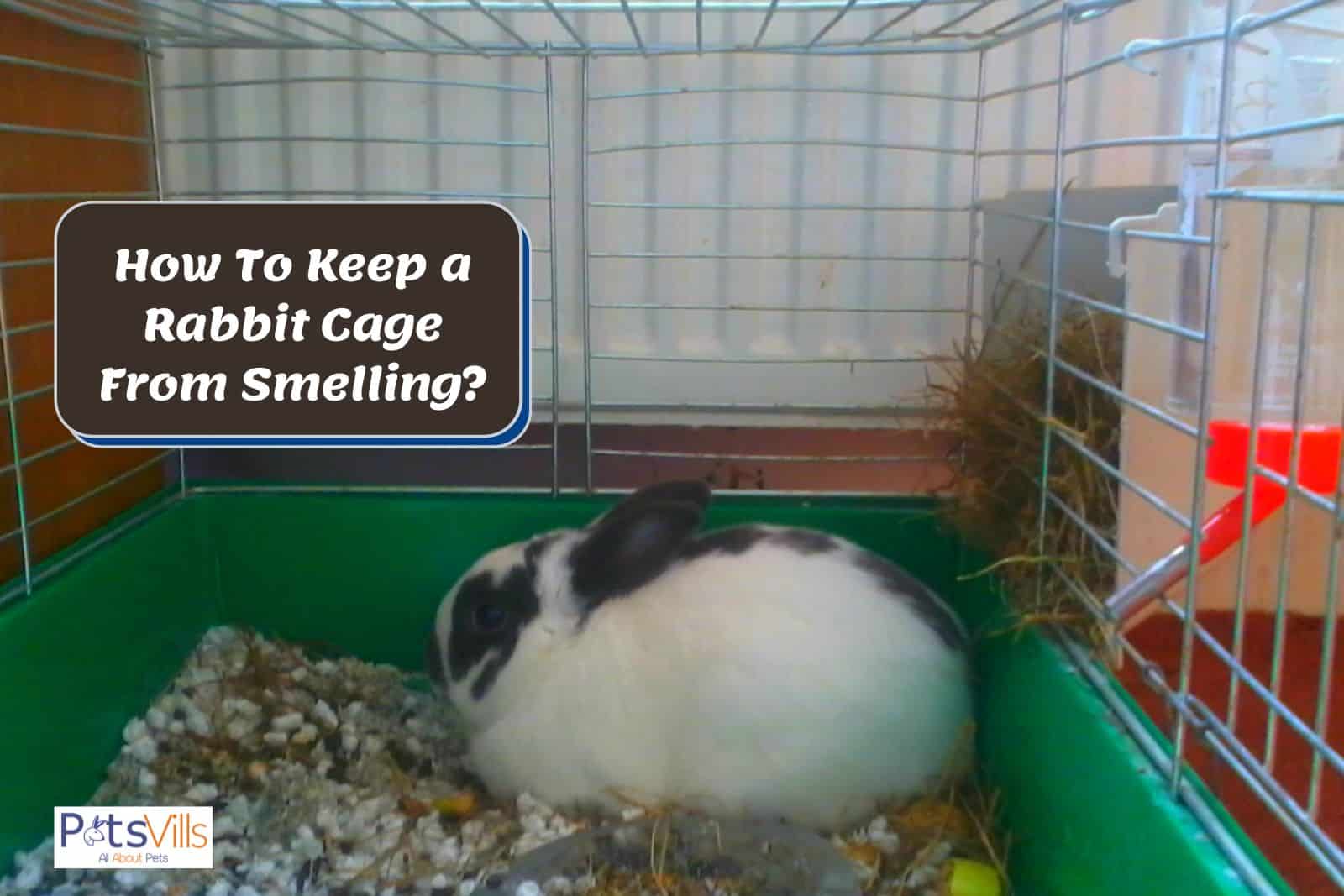Constantly scratching your head, trying to figure out how to keep a rabbit cage from smelling? I found the secret (hear me out!):
The odor is from their droppings, urine, and water they may have spilled.
All of this will get onto their bedding, and bacteria will inhibit it, which gives off that disgusting odor.
Luckily, there’s so much more to learn (KEEP SCROLLING!)…
Table of Contents
Key Takeaways
- Keeping your bunny’s cage from smelling is easy if you know how (more on this later!)
- Use the preferred absorbent bedding (Aspen wood shavings) to absorb the liquid.
- Use adequate cleaning aids like Kaytee Clean’s odor control kit on a smelly cage.
Using the Right Bedding Material
How to keep a rabbit cage from smelling sounds like untying a gordian knot ― But it’s pretty simple (I promise!):
To start, you can adjust your bunny’s bedding: suitable bedding material can help eliminate odor or prevent odor from forming in the first place.
Proper bedding is a double prize ― absorbing liquid and odor while giving your pet rabbit a comfortable resting place.
Improper rabbit cage bedding will do none of the above and could worsen matters. For example, urine will lay around, causing nasty bacteria to develop (not good!).
To combat this, you can choose from lots of bedding materials. Think of these as your go-to rescue remedies:
1. Aspen Wood Shavings
Aspen wood shavings are the best bedding material for rabbits [1].
Soft and sliver-free, Aspen wood shavings are super comfortable, like a bed of feathers. Your bunny will love it!

What’s more, these shavings have no smell. Yes, this means that freaky wood smell won’t be there (Yoo-hoo!).
There’s another huge plus: the product’s absorbent properties. These shavings absorb liquid and smell, keeping your bunny’s bedding soft, dry, and odor free.
You know what else? These shavings are easy to find. Call your local pet store and drop by to get it, or shop online ― your choice!
But in some stores, these shavings can be costly, especially in lumber yards.
That’s not all: these wood shavings could have termites as they weren’t adequately sanitized yet.
So, if you are frugal and precise, avoid lumber jards like the plagues…
2. Paper
For proper bedding, you can use plain paper. They must be ink-free. Ink is toxic to rabbits and can kill them.
Also, when the paper gets wet, the ink will get on your bunny’s fur (so avoid it!).
Instead, stick to white computer paper or brown paper bags for the bedding. Alternatively, for another lifesaver, use cardboard.
Before you can turn your cardboard sheets into helpful bedding, you’ll need to shred or tear them up first.
For ultimate comfort, I suggest you tear them into small pieces and use the long strands instead. These long pieces will help absorb liquids better and make cleaning easier.
3. Hay And Straw
Used as bunny bedding, straw is wonderful. But your bunny may snack on the hay, so it’s best to use it only as food.
Moreover, hay’s horrible absorption properties make it a dubious bedding choice, and its intricate texture will keep your bunny awake.

What about mixing straw and hay? I won’t recommend this, as your bunny might be confused about what to eat and where to sleep.
So, for bedding, it’s best to stick with straw.
4 Ways To Keep the Rabbit Cage From Smelling
Here’s how you can keep your rabbit’s cage from smelling:
1. Change the Bedding Frequently
If your bunny’s cage smells, it’s most likely soiled bedding. Rabbits will sometimes urinate on their bedding or near it.
That’s not all: Water spills from their bowls can also contribute to wet bedding, which will stop absorbing liquid, causing the entire cage to start smelling.
To avoid this double whammy, change the bedding twice weekly to ensure their cage is clean and smells fresh.
2. Deep Clean
Tossing out your bunny’s bedding partly removes bacteria, but some still stay behind.
These bacteria will not only cause a foul odor but could also cause the rabbit to get sick. How do you solve this?
And how often should you clean rabbit cage? Deep cleaning of the cage should be done once a week as follows:
1. Remove everything ― their bedding, water bowl, toys, and fluff.
2. Clean each item thoroughly ― spray the cage with a non-toxic antibacterial cleanser to freshen it.
3. Grab a sponge and scrub the cage from top to bottom until it’s cleaned. Make sure the small cracks at the edge are well-cleaned too.
4. Spray a disinfectant solution to kill any leftover bacteria and germs to complete the process.
Here you have it: a bunny cage-cleaning machine in a nutshell!
3. Keep the Cage With Proper Airflow
To keep the cage from smelling, check that your bunny’s cage is well-ventilated. Check that there’s no obstruction on all four sides of the cage [2].
Obstruction will prevent fresh air from seeping in and foul air from escaping.

As a rule, ensure that the space between the cage and the house’s furniture is 2 feet.
With such airflow, your bunny’s cage will be well-ventilated, with fresh air entering and stale air exiting.
As for the cage bars, check that they’re clean. Over time, these rods can collect all sorts of bad sticky stuff, and if dirty, they could restrict airflow. Solution: give them a rub!
Besides, the odor might seem harmless at first. But be alarmed: Your bunny could get sick.
4. Train Your Rabbit To Use the Litter Box
If you think you can only train cats to use litter boxes, think again! Though tricky, rabbits can also be trained but require patience and time.
Young rabbits are easier to train and tend to listen more than their adult counterparts.
Don’t be mistaken: you can also train adult rabbits ― though with time and patience.
Here are the steps:
- Make sure the rabbit is spayed or neutered first. If not, their instinct will alert them to mark their territory.
- Keep them in one room (for multiple rabbits). During litter training, keep the rabbits separate, each having a room with a litter box.
- Set up the litter box. Fill the litter box with hay or plain white paper. Don’t use newspapers. Their ink may stain your bunny.
- Put some droppings in the litter box. Once the rabbits leave droppings in the room, take them and place them into the litter box.
Be patient with the process. Rabbits are not used to litter boxes. By nature, they will poop anywhere where they feel safe.
It may take a couple of days or even a month for them to get used to using the litter box.
When they do, you won’t have to worry about cleaning up the rabbit poop as much because their cage will require less cleaning.
For a litter box, I recommend the Small Animal Potty Training Litter. It’s a perfect solution ― highly absorbent and designed for rabbits and other small animals.
Cleaning Products For Rabbit Cages
1. Kaytee Clean & Cozy Extreme Odor Control
This cleaning product is perfect for indoor rabbit cages. It will not only clean the cage but will deodorize it as well.
This marvelous cleaner has the following features:
- Safe for daily use.
- Fresh-smelling.
- Non-toxic.
Kaytee provides a one size fits all cleaning solution and guarantees their products are environmentally safe.
This product, an admirable cleaner, also helps the cage smell fresh for a long time.
FAQs
What cage choice is the most hygienic?

A plastic cage. It’s easier to keep clean than a wooden one and also free from the wood odor, which can contribute to a foul scent.
Is rabbit pee toxic to humans?
Not under normal conditions. But, if they are sick, their urine can transport harmful bacteria, affecting humans too.
Conclusion
So, you’ve learned how to keep a rabbit cage from smelling.
Rabbits are clean animals, and bad smells hint that something is wrong. If your white vinegar doesn’t work, I hope I’ve given you enough to chew on:
To combat cage smell, use the proper bedding. Dirty cages, just like dirty beds, are a no-no.
You can even swap their water dish for a water bottle to prevent nasty spills.
Anyhow, be mindful of your bunny’s litter tray and adjust something that seems off.
Doing what’s right ― cleaning and nurturing ― will contribute to a sparkling clean, odor-free cage.
To keep your bunny a healthy rabbit, follow my guidelines, and your bunny will be happy!

So, did you find the guide helpful? Don’t forget to share your thoughts in the comments!
References
- Erik. Choosing The Right Bedding For Rabbits [Internet]. Millamore. 2021 [cited 2022 Dec 8]. Available from: https://millamore.com/choosing-the-right-bedding-for-rabbits/
- Nidirect. Suitable Environment for Rabbits | Nidirect [Internet]. nidirect. 2019. Available from: https://www.nidirect.gov.uk/articles/suitable-environment-rabbits

Andreea is a very passionate content creator and her purpose is to provide you with the most interesting articles, while constantly discovering new facts. She’s been freelance writing for the past five years and has created numerous articles and educational materials while managing her own mom blog.
Read her Latest Articles
Find her on
FACEBOOK AND Instagram


